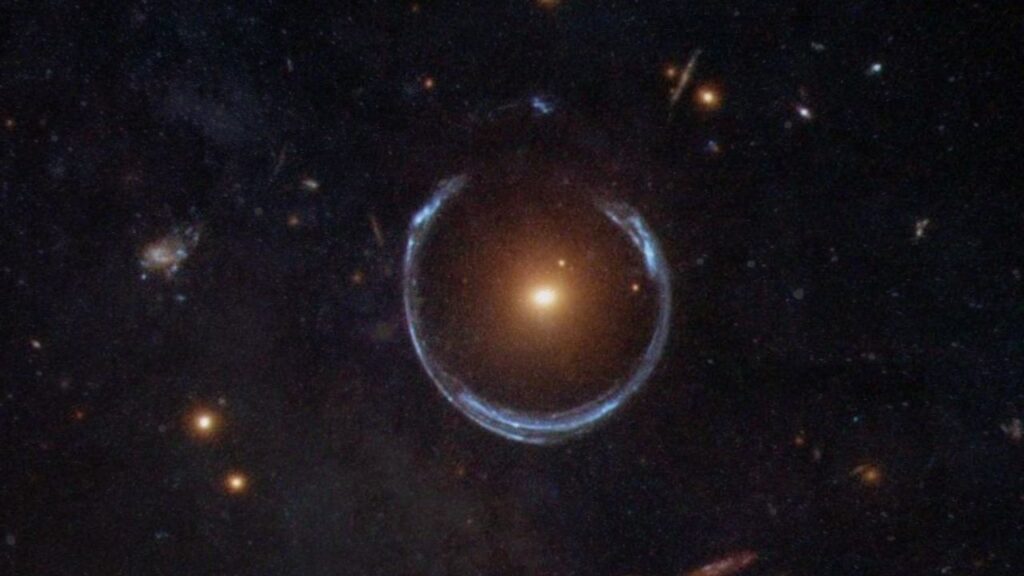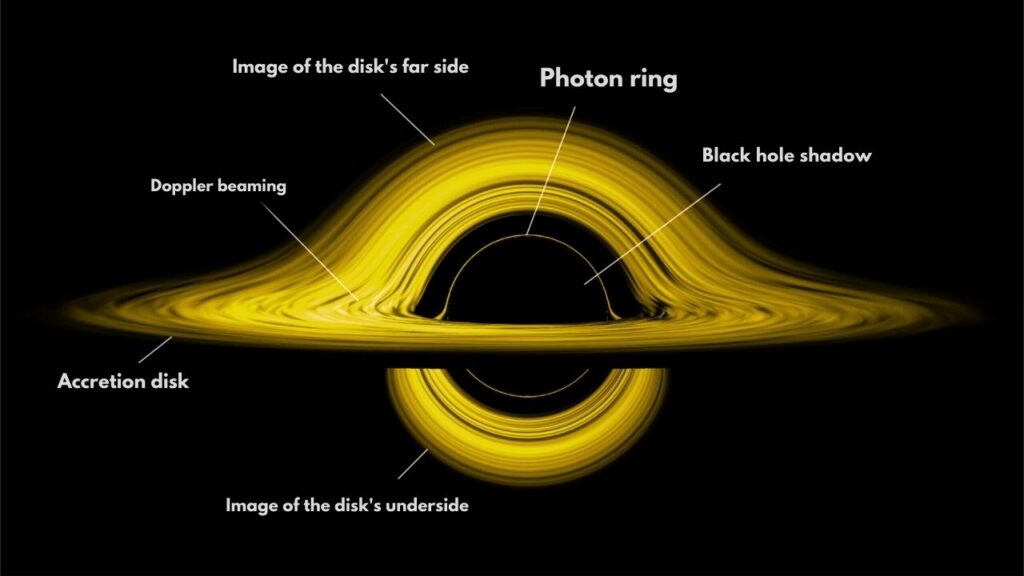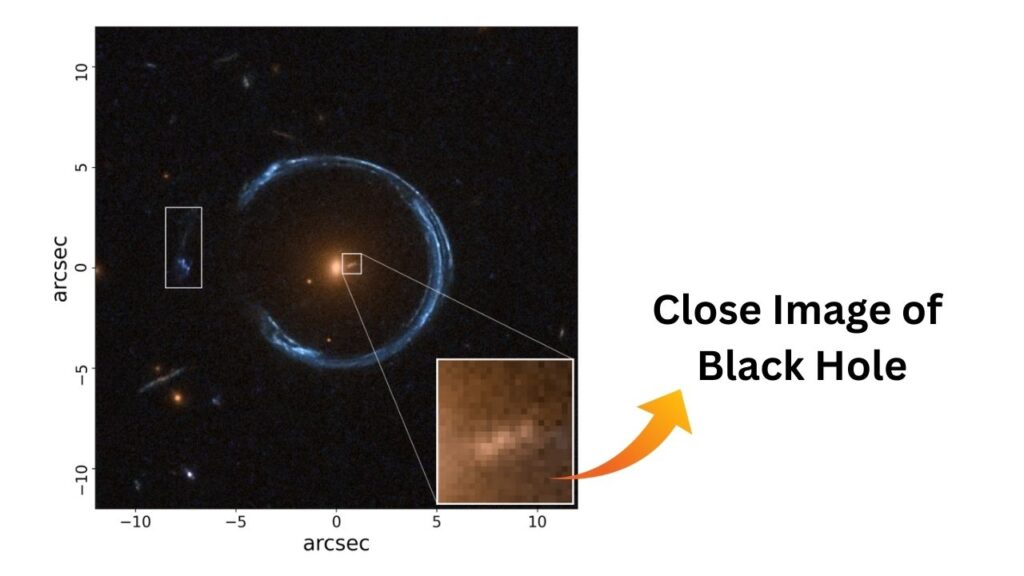Astronomers have made a groundbreaking discovery of a colossal black hole with a mass approximately 36 billion times that of our Sun. This black hole ranks among the largest ever observed in the universe, dramatically surpassing previous records, and offering new insights into the nature of the cosmos. Located in the distant Cosmic Horseshoe galaxy, around 5 billion light-years from Earth, this black hole reshapes our understanding of how massive black holes can grow and how they influence their galactic environments.

This article will guide you through the fascinating discovery, breaking it down into understandable segments with clear examples and scientific facts. Whether you’re a curious student or a professional seeking in-depth knowledge, this comprehensive overview will give you practical insights into one of astronomy’s most thrilling finds.
Table of Contents
Colossal Black Hole 36 Billion Times Sun’s Mass Discovered
| Feature | Details |
|---|---|
| Black Hole Mass | 36 billion times the mass of the Sun |
| Galaxy | Cosmic Horseshoe Galaxy (SDSS J1148+1930) |
| Distance from Earth | Approximately 5 billion light-years |
| Mass Comparison | 10,000 times more massive than the Milky Way’s central black hole, Sagittarius A* |
| Techniques Used | Gravitational lensing and stellar kinematics |
| Black Hole Type | Ultramassive black hole (beyond supermassive category) |
| Discovery Date | August 2025 |
| Lead Researcher | Professor Thomas Collett, University of Portsmouth |
| Scientific Source | Published in Monthly Notices of the Royal Astronomical Society |
| Official Resource Link | Royal Astronomical Society (RAS) |
The discovery of a black hole 36 billion times the mass of the Sun in the Cosmic Horseshoe galaxy is a monumental achievement in astronomy. It expands our understanding of black holes, their growth limits, and their role in galaxy formation. By innovatively combining gravitational lensing with stellar motion studies, scientists have opened new windows into studying the most massive and mysterious objects in the universe.
As the field advances, this colossal black hole will remain a touchstone for research, inspiring us to explore the depths of space and the extremes of nature.
What Is a Black Hole and Why Is This Discovery Important?
Black holes are regions of space where gravity is so strong that nothing, not even light, can escape. They form when massive stars collapse or through other cosmic events, and many galaxies, including our own Milky Way, host supermassive black holes at their centers. These supermassive black holes typically weigh millions to billions of times the Sun’s mass.

However, this newly discovered black hole weighs a staggering 36 billion times the mass of the Sun, categorizing it as an ultramassive black hole. This challenges our previous ideas about black hole growth limits and offers a rare opportunity to study the extreme end of black hole sizes.
How Did Scientists Discover the Cosmic Giant?
1. Gravitational Lensing: Nature’s Cosmic Magnifying Glass
The Cosmic Horseshoe galaxy is so massive that its gravity bends and magnifies the light from a more distant galaxy behind it, creating a horseshoe-shaped phenomenon known as an Einstein ring. This natural effect is called gravitational lensing and allows astronomers to study extremely distant objects and mass distributions in detail.

When light passes near the black hole and its host galaxy, the gravity deflects the light’s path, distorting the image we see from Earth. By analyzing these distortions, scientists can infer the presence and mass of the black hole causing the lensing effect.
2. Stellar Kinematics: Watching Stars Dance Around the Invisible
To measure the black hole’s mass more precisely, researchers used stellar kinematics, which involves observing the motion of stars near the black hole. The faster and closer the stars orbit an invisible mass, the bigger that mass must be.
By combining these two advanced techniques — gravitational lensing and stellar kinematics — scientists arrived at an exceptionally accurate measurement of the black hole’s mass.
Why Is This Black Hole So Massive?
Black holes grow by accumulating matter and merging with other black holes. The Cosmic Horseshoe’s black hole is thought to have reached its enormous size through multiple galaxy mergers and continued absorption of matter over billions of years. This ultramassive black hole is close to the theoretical upper mass limit predicted for such cosmic objects.
Imagine the Milky Way’s black hole, Sagittarius A*, as a small pebble compared to this giant’s mass. Our galaxy’s central black hole is about 4 million times the Sun’s mass, whereas the Cosmic Horseshoe black hole is 10,000 times heavier.
Breaking Down the Size and Scale
- Diameter: Estimated to be up to 300 million times the size of our Sun.
- Mass: 36 billion solar masses — roughly equal to half the mass of all stars in the Cosmic Horseshoe galaxy combined.
- Distance: Light from this black hole takes 5 billion years to reach us, meaning we’re seeing it as it existed billions of years ago when the universe was younger.
What Does This Discovery Mean for Science and Astronomy?
Understanding Galactic Evolution
This discovery provides valuable clues about how galaxies and their central black holes grow together over cosmic time. It also sheds light on the extreme environments where such giant black holes reside.
Scientists speculate that some galaxies may form ultramassive black holes early in their history, suggesting a “black hole first” scenario rather than a simple co-evolution with stars.
Challenging Black Hole Mass Limits
The ultra-large mass challenges previous models on how massive black holes can realistically get, pushing the boundaries of astrophysical theories.
Practical Lessons and Broader Implications
- The methodology combining gravitational lensing and stellar kinematics could be applied to discover and accurately measure many more distant massive black holes.
- This may help understand black hole growth rates, galaxy formation, and their impact on cosmic structures.
- Increased knowledge of black hole sizes is crucial for refining models used in cosmology and high-energy astrophysics.
This Black Hole Shouldn’t Exist – And Physics Might Be Broken Because of It
Astronomers Observe Largest Black Hole Merger Ever Recorded in the Universe
Could the Webb Telescope Finally Reveal If Supermassive Black Holes Formed Directly?
FAQs About the 36 Billion Solar Mass Black Hole
Q1: What is the Cosmic Horseshoe galaxy?
A: It’s an extremely massive galaxy located about 5 billion light-years away, nicknamed for the distinctive horseshoe-shaped ring of light created by gravitational lensing.
Q2: How do scientists measure black hole mass without seeing the black hole directly?
A: They observe the gravitational effects on nearby stars and light, using methods like stellar kinematics and gravitational lensing.
Q3: Is this the biggest black hole ever found?
A: It’s among the top 10 most massive ever discovered, and possibly the largest with the highest measurement certainty to date.
Q4: What is the difference between supermassive and ultramassive black holes?
A: Supermassive black holes range from millions to billions of solar masses; ultramassive black holes are even larger, exceeding about 10 billion solar masses.
Q5: Can black holes keep growing forever?
A: There’s a theoretical upper mass limit based on how much matter they can accumulate and the dynamics of their host galaxies, which this discovery is approaching.



















